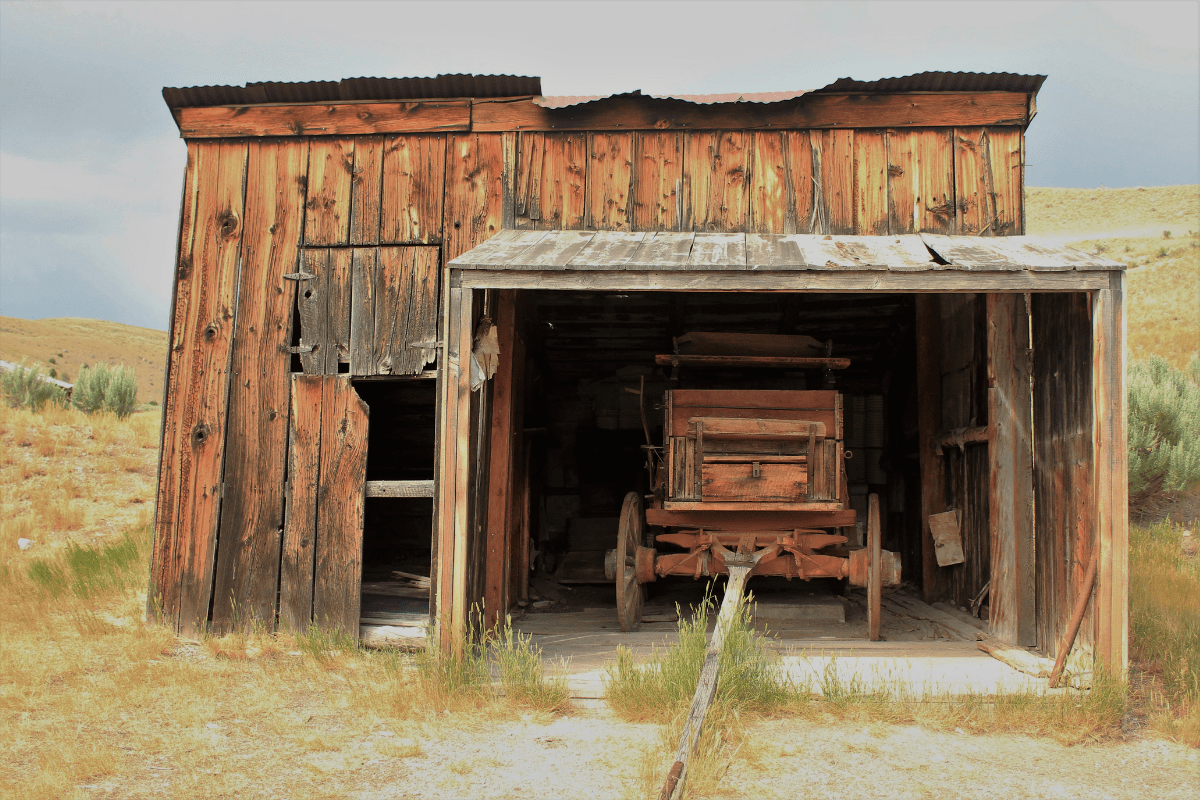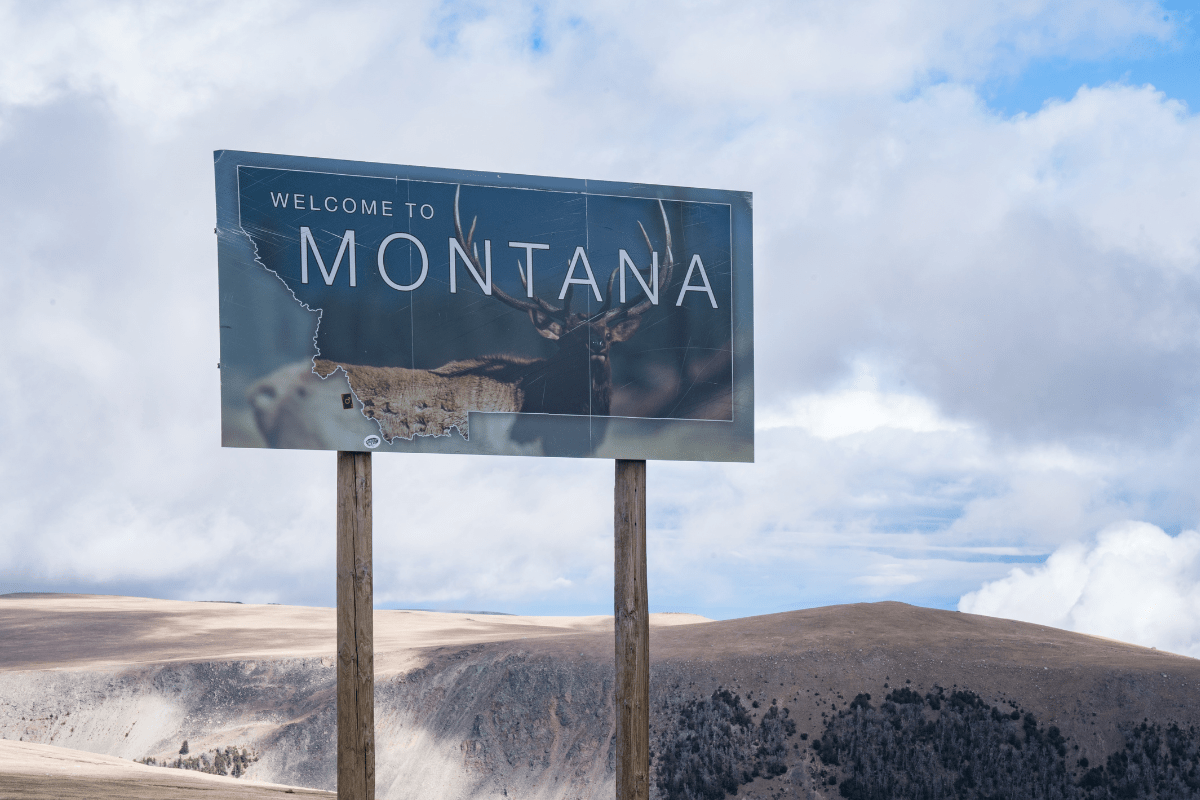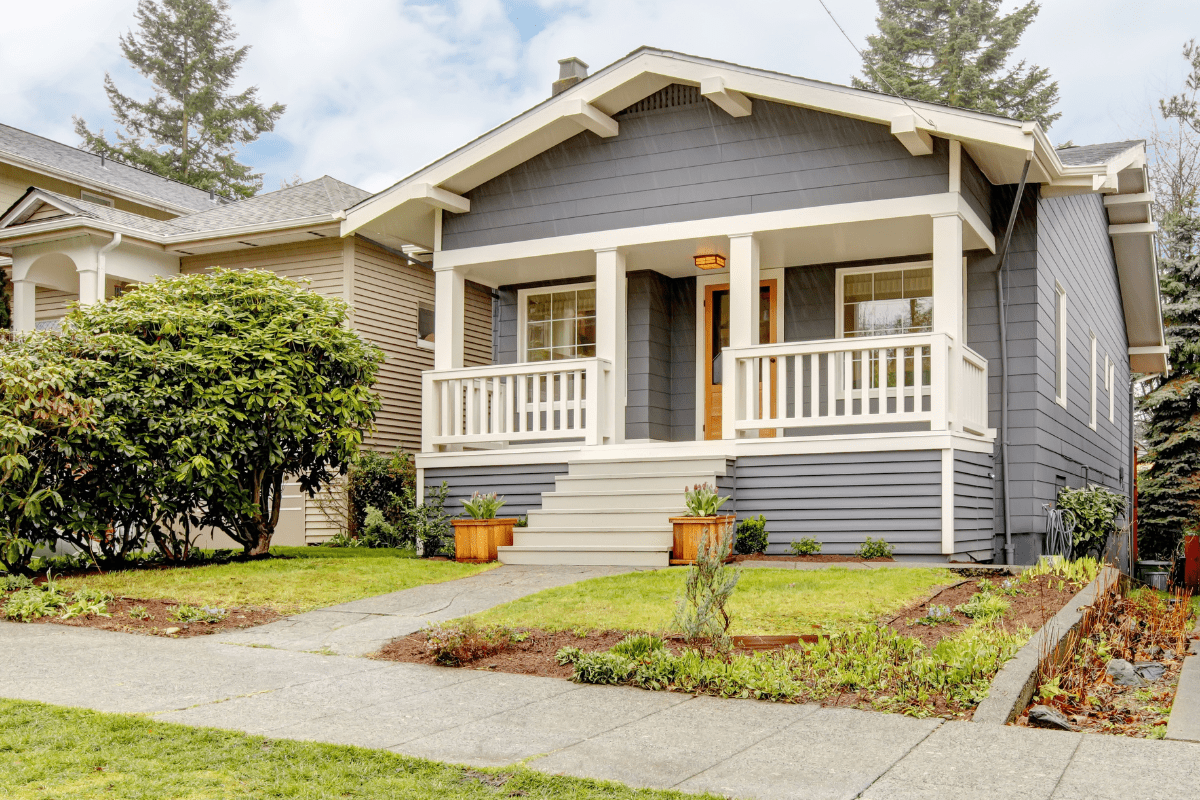Montana welcomed nearly 14 million visitors in 2024, and honestly, most of them probably stood in the exact same photo spots at Glacier and Yellowstone. While these parks absolutely deserve their fame, they're also absorbing 57% of the state's tourism dollars and creating the kind of crowds that make locals consider moving to North Dakota.
The real Montana starts where the tour buses stop
Here's the thing about Montana's famous parks: they're victims of their own success. Glacier and Yellowstone keep breaking visitor records, with gateway communities like Flathead County seeing tourist spending that would make a Vegas casino jealous. Meanwhile, there's an entire state out here filled with ghost towns where you can actually hear yourself think, hot springs without Instagram influencers, and small towns where the biggest traffic jam happens when cattle cross Main Street.
I'm not saying skip the parks entirely (that would be like visiting Paris and avoiding the Eiffel Tower), but maybe save half your trip for the places where Montana still feels like Montana. You know, where dinosaur bones outnumber tourists and the term "crowded" means three cars at the trailhead.
Small towns that time forgot (in the best way)
Let me tell you about Ekalaka, a place so remote they call it "Montana's Timbuktu." This town of 400 people somehow managed to grow 22% while neighboring communities withered away. Their secret? Dinosaurs.
The town that hunts bones
The Carter County Museum might be Montana's first county museum (established way back in 1936), but it houses treasures that would make the Smithsonian jealous. We're talking one of the world's most complete Edmontosaurus skeletons, just chilling in a small-town museum with free admission. Life Magazine called this place "The Town That Hunts Bones" in 1954, and honestly, not much has changed except maybe the hairstyles.
Every July, paleontologists and fossil enthusiasts descend for the Dino Shindig, which sounds like a children's party but is actually serious science mixed with small-town charm. The museum volunteers will tell you stories about finding dinosaur bones in their backyards… because that's just normal Tuesday stuff in Ekalaka. To get there, drive 36 miles south of Baker on Highway 7, through badlands that look like Mars decided to vacation in Montana. Pro tip: check museum hours before you go, because this isn't Manhattan and things close when they feel like it.
The Hi-Line hideaway
Chester sits 44 miles east of Shelby on US Highway 2, serving as the gateway to Montana's only cable-stayed suspension bridge. With 800 residents and more pickup trucks than people, this railroad town offers something increasingly rare: authenticity without trying.
The real draw here is Lake Elwell at Tiber Reservoir, boasting 181 miles of shoreline that somehow remain largely empty even in peak summer. From May through September, you can boat, fish, and camp without fighting for space. The town itself maintains that Great Northern Railway charm, where the biggest decision you'll face is whether to have pie or cobbler at the local cafe (correct answer: both).
Where Montana's gold rush refuses to die
Bannack Ghost Town State Park preserves Montana's first territorial capital better than any museum could, mostly by leaving it alone. Unlike those roped-off historic sites where you peer through windows, Bannack lets you wander through Hotel Meade and poke around Doctor Ryburn's house like you're house-hunting in 1862.
Located 25 miles southwest of Dillon, this collection of 60-plus buildings charges Montana residents exactly nothing to explore (non-residents pay a whopping $8). Summer hours run 8 AM to 9 PM, giving you plenty of time to photograph empty saloons in golden hour light. During Bannack Days each July, costumed interpreters bring the town back to life, though honestly, it never really died… it just got very, very quiet.
Natural wonders without the tour buses
Some places in Montana require effort to reach, which thankfully keeps them pristine. These aren't your drive-up-and-selfie destinations; they're the places that make you earn your wonder.
The Bob Marshall Wilderness: 1.5 million acres of "leave me alone"
Locals just call it "The Bob," which makes it sound friendly and approachable. Don't be fooled. This 1.5-million-acre wilderness complex will humble you faster than a Montana winter.
The Chinese Wall stands as the Bob's signature feature… a limestone escarpment rising 1,000 feet for 22 miles along the Continental Divide. It's like nature decided to build its own Great Wall but with better views and zero gift shops. The wilderness offers 1,700 miles of trails with no permit fees (though you need to register), ranging from day hikes to expeditions that'll have you questioning your life choices around day 10.
Essential gear for Bob Marshall adventures:
- Bear spray (non-negotiable)
- Topo maps (phone service? LOL)
- First aid kit
- Weather gear for all seasons
- Humility
- More bear spray
- Sense of humor when weather changes
Peak season runs June through October, though "peak" is relative when we're talking about 1.5 million acres. Snow typically lingers until mid-April and returns by early November, because Montana weather follows no rules. Dean Lake, reached via a 36-mile round trip from Spotted Bear River trailhead, offers camping beneath Pentagon Mountain in what locals call Montana's finest backcountry site. Just remember: both black bears and grizzlies call this home, and they didn't invite you.
Medicine Rocks: Where darkness still means something
In 2020, Medicine Rocks State Park earned International Dark Sky Sanctuary designation, joining an elite group of places where you can actually see the Milky Way without squinting. These sandstone formations near Ekalaka rise from grasslands like nature's own sculpture garden, full of caves, arches, and hoodoos that would cost millions to recreate in Vegas.
Sacred to Plains tribes for centuries, the rocks bear petroglyphs and pictographs from the Crow, Cheyenne, and Sioux peoples who gathered medicinal plants here (hence the name). Theodore Roosevelt camped here in 1883 and called it "fantastically beautiful," which from a guy who later became president is basically a five-star Yelp review.
The 330-acre park offers 12 primitive campsites on a first-come, first-served basis. Montana residents enter free while non-residents pay $8, which might be the best entertainment deal in America. Facilities include vault toilets and hand-pump water, so adjust your glamping expectations accordingly.
Makoshika: Montana's badlands on steroids
Makoshika State Park sprawls across 11,538 acres southeast of Glendive, making it Montana's largest state park. The Hell Creek Formation here has yielded more T-Rex and Triceratops fossils than a Jurassic Park prop department, with active digs still happening today.
Twenty miles of trails wind through rainbow-colored rock layers, including the technical Gunner's Ridge Trail where runners balance on 18-inch-wide ridgetops because apparently regular trails are too mainstream. The visitor center displays a 600-pound juvenile Triceratops skull, which really puts your workout goals in perspective.
Things to do at Makoshika:
- Hike colorful badlands trails
- Hunt for fossils (looking only!)
- Attend Buzzard Day (June)
- Camp under infinite stars
- Question your GPS constantly
- Marvel at geological time
Camping runs $4-34 per night for 28 sites that can handle RVs up to 60 feet, though bringing a 60-foot RV here seems like missing the point entirely.
Hot springs that haven't been Instagrammed to death
Montana's hot springs scene splits into two camps: rustic soaks that require commitment and developed resorts that accept credit cards. Both have their place, depending on your tolerance for adventure versus amenities.
Renova Hot Springs: For the dedicated soaker
Located 10 miles south of Whitehall, Renova Hot Springs makes you work for your soak. After navigating seven miles of dirt roads that'll have you questioning your rental car choices, you'll hike to the Jefferson River where volunteers have built rock pools capturing 110-122°F spring water.
Best visited March through October when river levels hover around 700 cubic feet per second (yes, that's how we measure rivers here), these springs follow the clothing-optional customs typical of undeveloped sites. There are exactly zero facilities, so pack out everything and maybe bring tennis balls to plug pool drains… it's a whole thing. Trust me.
Elkhorn Hot Springs: Frozen in 1918
Forty miles southwest of Dillon, Elkhorn Hot Springs preserves a lodge experience that hasn't changed since 1918, and I mean that literally. The dormitory-style rooms and rustic cabins look exactly as they did when your great-grandparents might have visited, which is either charming or concerning depending on your maintenance standards.
Natural pools flow at 92-106°F without chemical treatment, relying on fast flow-through to keep water pristine. Located on the Pioneer Mountain Scenic Byway (summer only, because winter here is no joke), Elkhorn sits near Maverick Mountain ski area and Crystal Park, where you can dig for quartz crystals. The home-cooked meals prepared by local staff complete the time-capsule atmosphere, though the food is thankfully more 2024 than 1918.
Quinn's Hot Springs Resort: Civilization meets hot water
In Paradise (yes, that's the actual town name), Quinn's Hot Springs Resort balances rustic charm with modern comfort along the Clark Fork River. Named for Martin Quinn, an Irish immigrant who noticed Native Americans gathering at these steamy mountainsides in the 1880s, the resort now offers something for everyone who likes their nature with a side of wine bar.
Five natural flow-through pools range from 100-106°F, complemented by a 55°F cold plunge that'll make you question your life choices and two salt-treated pools for the chlorine-averse. Twenty-five cabins range from basic to "I could live here forever," and yes, day passes need booking in advance if you're not staying overnight. The Montana Baroque Music Festival brings classical performances here each summer, because nothing says "Montana" like soaking in hot springs while listening to Bach.
When to dodge the crowds like a local
Understanding Montana's tourism patterns is like having a secret decoder ring for enjoyable travel. July and August see 46-48% of annual visitors, creating the kind of crowds that make locals nostalgic for winter blizzards.
The shoulder season secret
May through June and September through October offer what I call "Goldilocks Montana"… not too hot, not too cold, not too crowded. Fall particularly shines (literally) when larch trees turn golden in late September, creating Instagram-worthy scenes with a fraction of the photographers.
Fall shoulder season perks:
- Golden larch displays
- Elk bugling season
- Harvest festivals
- Cooler hiking weather
- Hotel rates dropping
- Locals becoming friendly again
Winter: For the brave and the bold
Winter transforms hot springs into magic. Steam rises dramatically when air temperatures hit 0°F, creating the kind of atmosphere money can't buy. Elkhorn offers ski-and-soak packages, Quinn's maintains year-round access, and if you're truly adventurous, Garnet ghost town rents primitive cabins accessible only by snowmobile or cross-country skis.
The 2024-2025 forecast suggests average to above-average snowfall thanks to weak La Niña conditions, which in Montana speak means "pack extra everything."
Essential planning that might save your bacon
Montana's vastness isn't a marketing slogan… it's a reality check waiting to happen. Cell coverage exists along major highways but disappears faster than gas station coffee between towns. T-Mobile leads with 51% state coverage, which sounds decent until you realize the other 49% includes most places worth visiting.
The distance reality check
Eastern Montana laughs at your city-based distance expectations. Gas stations in small towns often close by 8 PM (on a good day), and the distance between services can exceed 100 miles. Town Pump stores offer reliable 24-hour service, becoming tiny oases of gasoline and beef jerky when you need them most.
Download offline maps before leaving civilization. Use Montana 511 for real-time road conditions, especially October through April when mountain passes might require chains or a complete change of plans. Forest roads accessing many hidden spots close entirely in winter, because even Montana has limits.
Wildlife isn't just for postcards
Grizzly bears continue expanding eastward, with 2024 bringing confirmed sightings in the Bear Paw Mountains for the first time in decades. This isn't fear-mongering… it's respect for neighbors who weigh 600 pounds and run faster than your car in first gear.
Essential safety gear includes bear spray (learn how to use it before you need it), emergency supplies, warm clothing even in summer, and basic first aid. Travel in groups when possible, make noise on trails, and always inform someone of your plans before entering areas without cell coverage. That Instagram shot isn't worth becoming bear breakfast.
Supporting the locals who keep these places alive
Montana's shifting from "destination marketing to destination stewardship," which basically means we're tired of being loved to death. Stay in locally-owned lodging instead of chains, eat at small-town cafes where ranchers still gather for morning coffee, and buy supplies from local merchants who've kept these communities alive through boom and bust.
Respect private property like your mother taught you. Much of Montana remains in private hands, and maintaining good relationships ensures continued access to special places. That "No Trespassing" sign isn't a suggestion, and that rancher's goodwill might be the difference between an amazing local tip and a very quiet meal at the town cafe.
The real "Last Best Place" awaits
Montana beyond the famous parks reveals itself slowly, like a good friend who takes time to trust you with their secrets. In Ekalaka's fossil-rich badlands, Bannack's ghostly streets, and the Bob Marshall's pristine wilderness, you'll discover what Montanans mean when we call this the "Last Best Place."
These hidden gems offer more than escape from crowds. They provide connection to landscapes and communities where the American West's essence survives, waiting for those willing to drive the extra miles down dusty roads toward adventure. Just remember to wave at passing trucks (it's required), never rush a Montana conversation, and always top off your gas tank when you can. The best Montana experiences happen when you stop trying to see everything and start actually seeing something.





